11 Mistakes You're Making With Instant Coffee
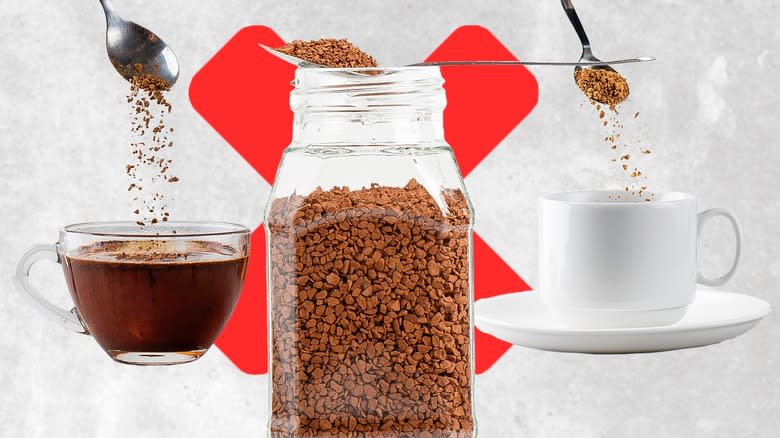
Instant coffee presents itself as somewhat of a controversial choice amongst coffee lovers. While it offers a speedy and convenient means of enjoying coffee without brewing equipment, instant coffee is often regarded as far inferior when pitted against freshly brewed ground coffee. However, many of the unfavorable qualities that the no-fuss form is commonly associated with, such as blandness, bitterness, and acidity, are rarely a result of the granules themselves, but rather mistakes made during preparation.
Water composition and temperature, for example, play a significant role in the prep, and subsequently the taste, of instant coffee. Likewise, poor-quality ingredients and a lack of good practice can squander the flavor of your brew. Avoiding such mistakes can completely change the taste and texture of instant coffee, and these dried grounds, although different from their fresher counterparts, can be just as enjoyable and remarkably luxurious when prepped with a little patience, care, and -- perhaps most crucially -- optimism.
Indeed, many small and easy adjustments to your instant coffee-making process can take this underdog from average to aromatic in no time. So dig out that jar from the back of your cupboard and get some water heating.
Read more: 26 Coffee Hacks You Need To Know For A Better Cup
Choosing A Low-Quality, Spray-Dried Coffee
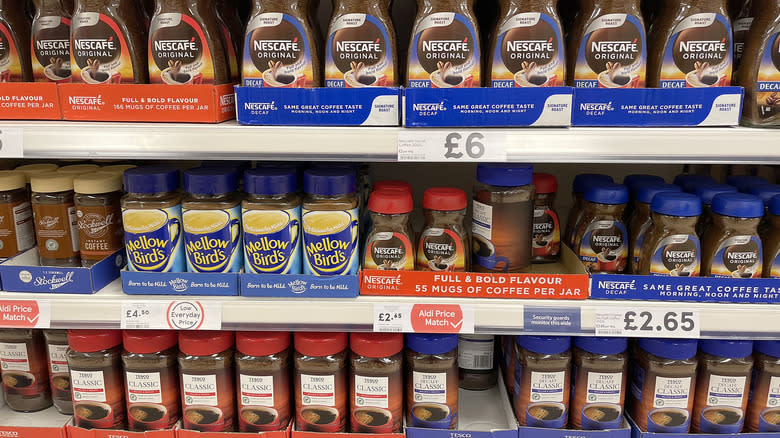
It goes without saying that higher-quality coffee grounds will produce a better-tasting cup of coffee than most of their cheaper alternatives, but it can be tricky to know exactly what to look for. While we've made it easier to know which makes to keep an eye out for -- and conversely, which to avoid -- with our roundup of the best instant coffee brands, it's particularly useful to be aware of the most important difference between average and great-tasting instant coffee granules.
Generally, you will want to opt for instant coffee that is labeled as "freeze-dried" and avoid any that are instead "spray-dried". Spray-dried coffee is made by converting liquid coffee into much smaller drops, which are then dried by steam. As the liquid coffee drops evaporate, a fine powder is produced, ready to be used. Though it is a quick and efficient method, the high temperatures used for drying can cause the coffee granules to lose the majority of their signature aroma, resulting in a far weaker flavor.
Freeze-dried coffee, on the other hand, keeps all of its flavor during the drying process, as far lower temperatures are used to extract the solids. The method involves bringing the coffee to the point of freezing, splitting it into more compact granules, before gently drying it out and exerting heat. As the frozen particles convert to gas, solid coffee granules are formed. These granules, subjected to less intense conditions, provide a notably smoother, more full-bodied sip.
Not Warming Your Mug Up First
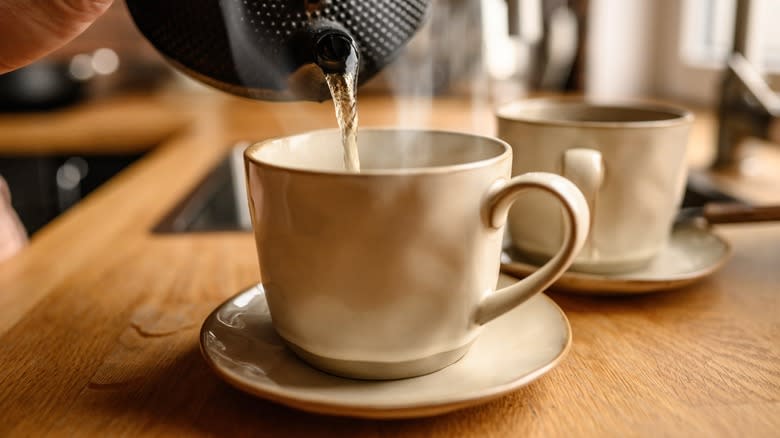
If you like to take your time with your morning coffee, you'll almost certainly want to maximize how long your drink stays hot. One of the simplest but most effective ways to do this is by heating your mug up with hot water before you start making your coffee. Though it may seem like an unnecessary step, it's common practice amongst most coffee chains, whose placement of mugs on top of their espresso machines is not just for easier access, but also a means of pre-heating the crockery.
While you will by no means end up with a cold drink if you use a tepid mug, both the instant temperature and the longevity of the warmth of your coffee will decrease when coming into contact with cold porcelain. In fact, a cold mug can cause the temperature of your hot water and instant coffee mix to drop pretty imminently by up to 10 degrees. Add cold milk or creamer, and the temperature will sink further, leaving you with a less-than-ideal brew that could quickly become cold.
Thus, to get the most out of your drink, simply fill up your cup with hot water and leave it to stand until the outside feels warm to the touch. For a slightly speedier option, you can also put your cup in the microwave for 10 to 20 seconds to heat it up -- but be careful not to burn yourself when taking it out.
Opting For Tap Water Instead Of Filtered Water
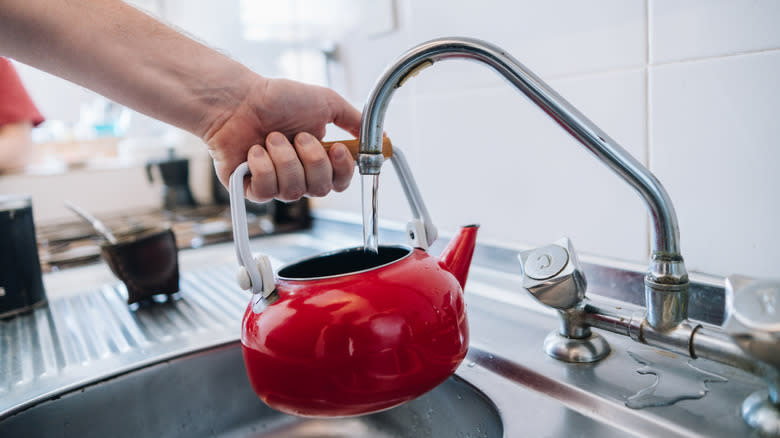
Instant coffee is often infamously and unfairly associated with an overbearing acidity and bitterness, but this may not always be the fault of the granules you are using. Your cup of coffee is comprised of far more water than actual coffee. So if you are using a high-quality make but still notice a slightly sour aftertaste, it could be due to the water you are using. Tap water contains traces of metals such as aluminum and magnesium, alongside various other minerals, and though not harmful, these impurities can lend an unfavorable metallic taste to your coffee.
Using filtered water instead ensures a far smoother, less acidic brew, while also eliminating the risk of any sediment or undesired odors making their way into your coffee. Likewise, if you live in an area with particularly hard water, which is water that contains a large amount of calcium, you may want to invest in a water softener. Dr. David Beeman, founder of Cirqua Customized Water, explains to New Ground magazine that the excess calcium in hard water "will impart a certain sweetness to coffee" that may throw its aroma off. So addressing this issue will also result in a more balanced result.
Ultimately, the taste of your coffee will be impacted by the taste of your water, which can vary depending on where you live. However, filtering your tap water will stand you in the best stead to avoid acidity.
Forgetting To Create A Cold-Water Paste
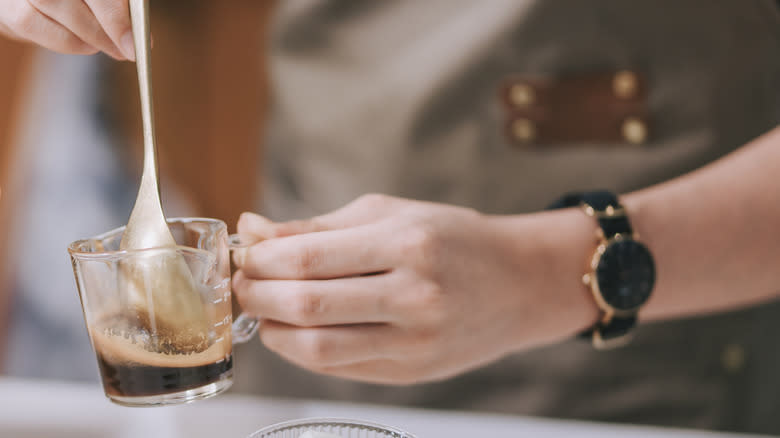
If you've ever sensed a slight chalkiness to your coffee, you're likely not alone. Instant coffee contains amylum, a starchy binding agent, that has a tendency to harden when coming into contact with hot water. This impacts the texture of your coffee, giving it a grittiness and roughness that can ruin your drinking experience. Just one simple extra step can help to prevent this, and all you need is cold water.
Instant coffee dissolves in cold water, making it ideal for making cold brew, but also for ensuring smooth and silky hot coffee. By pouring cold water onto your granules and gently mixing the two together until the granules dissolve, you soften the amylum, thereby preventing it from developing a signature chalkiness. You don't need to add much, just enough to create a thick paste, which can then be topped up with hot water as normal.
Though it may seem fastidious, including this step in your routine will only add an extra minute or two to your prep time. And it will also guarantee a far more aromatic, velvety coffee.
Heating Your Water In The Microwave
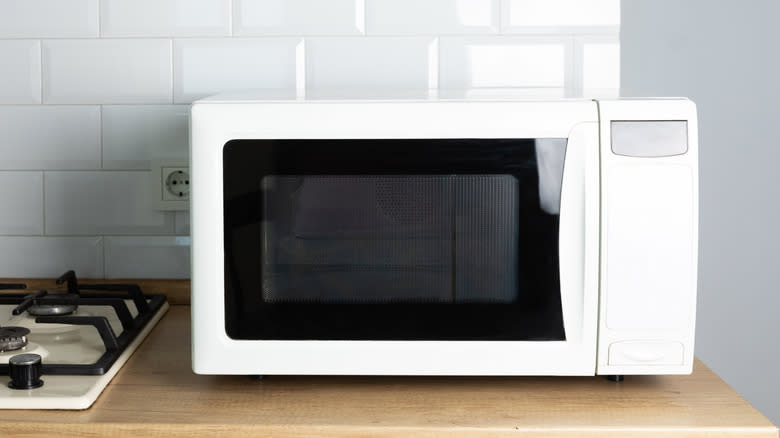
Although heating water in the microwave is a quick, easy, and popular method, it's not the best choice for making instant coffee. Microwaves are known to cook things unreliably, with some areas receiving more heat than others, and this can easily spoil your coffee.
Not only does water boiled in the microwave pose a greater risk of burning you, with sudden changes in temperature sometimes causing the water to erupt, but it also has a more inconsistent temperature than water boiled on the stove. This is because the electromagnetic waves that microwaves use to heat things hit the water in irregular sections, and parts of the liquid become warmer than others. For making a hot cup of coffee, this can prove a problem. You'll likely either end up with a lukewarm drink or risk overheating your water in an attempt to bring the cooler sections up to the desired temperature.
For more uniformly heated water, and subsequently a more uniform cup of coffee without any cold pockets, boil your water on the stove. Doing so means that the water is heated from the bottom, which allows hotter water to rise up, assuring a more even overall temperature. If you don't love the idea of waiting for your water to boil this way every time you want to make a quick instant coffee, consider investing in a kettle for the speedy convenience of a microwave but the dependability of the stovetop.
Burning Your Instant Coffee With Boiling Water
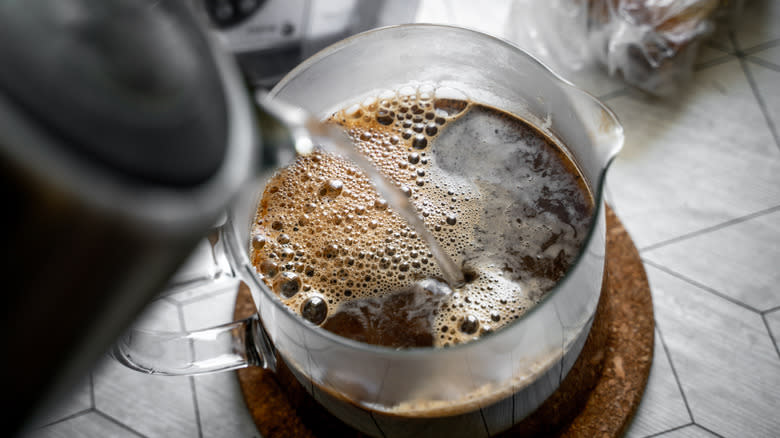
When many of us picture the perfect cup of hot coffee, we more than likely envisage a piping hot mug with a generous trail of steam. However, just like how pockets of cold water can ruin your coffee-drinking experience, water that is too hot can also destroy the delicate flavor of your granules. The boiling point of water is 212 degrees Fahrenheit. This immensely high temperature tends to over-extract the coffee granules, imparting a burnt and bitter taste.
To avoid scorching your coffee, aim to bring the water just below boiling point, or alternatively leave it to cool slightly before pouring it over the instant coffee granules. You still want the water to be nice and hot, as under-extracted coffee will also produce fairly flat or even sour results. So be mindful not to leave the water to sit for too long.
According to the Specialty Coffee Association, the optimal temperature for brewing instant coffee is around 200 degrees. It can, of course, be difficult to obtain this exact temperature, but anything between 195 and 205 degrees will still guarantee an aromatic brew without any bitterness.
Ignoring The Correct Ratio Of Water To Instant Coffee
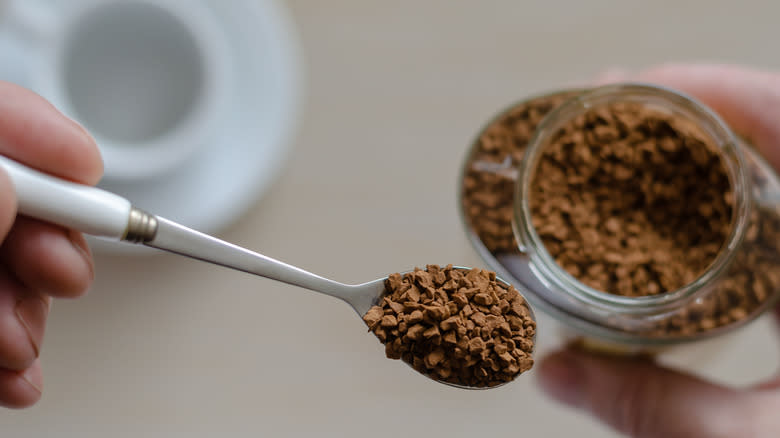
Part of the reason that instant coffee has a perhaps unfair reputation for being bland and weak is that, oftentimes, too little attention is placed on the ratio of water to coffee granules. Too much water combined with just a teaspoon of granules will result in a highly diluted cup and a fairly uninspiring-tasting beverage. Conversely, adding too little water to a large volume of granules will give your coffee an overwhelming richness with too much of an edge.
To get your coffee just right, it's important to pay attention to the recommended servings on the packaging, instead of taking it as a given that a teaspoon is standard. Similarly, measuring your water accordingly, instead of topping up your dissolved coffee granules with a rough estimate, will provide a more full-bodied brew. Using the printed guidelines will help you ensure that your coffee is neither too weak nor overly strong, but the rest will, of course, come down to personal preference.
Experiment with the ratio of water to coffee granules to find the combination that works for you. And be sure to take note of exactly how much of each you are using, as guesswork will give you inconsistent results.
Using Poor-Quality Creamer And Syrups
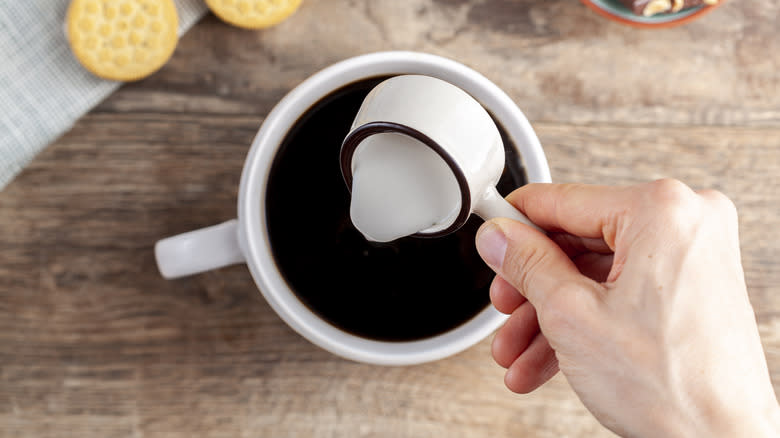
Generally, instant coffee tends to be a little blander, though also typically harsher, than ground coffee. This is due to the loss of complex flavors that instant coffee undergoes during its drying process. A high-quality make will give you more nuanced flavors like those you associate with freshly ground coffee. But it's not unreasonable to say that a cup of black instant coffee can sometimes feel a little lackluster.
As such, instant coffee benefits from a boost given by creamers and syrups, which help to add some of the complexity and interesting tasting notes that are often lost as freeze-dried coffee is processed. However, because of its simplicity, instant coffee may be a little more unforgiving when it comes to pairing up with extras and additives.
Where a fairly simple sugar syrup may complement the richness of freshly ground coffee, it may not be able to take the edge off in the same way when added to a cup of instant coffee. If, therefore, you don't like the taste of black coffee, be sure to select good-quality coffee creamer and the best-tasting syrups to flavor your drink, as you will certainly be able to taste the difference.
Adding Sugar After Hot Water
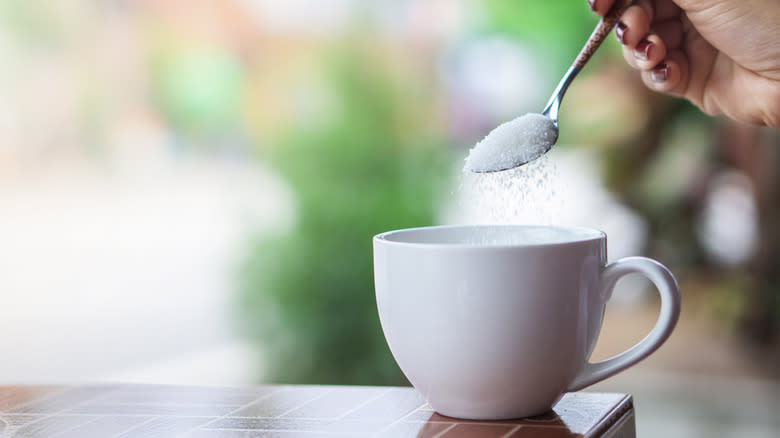
If you prefer not to tamper too much with the flavor of your coffee but still like it sweet, don't be tempted to save this step to the end. Just like with cold water, adding any sugar to your coffee before the hot water will also result in a far smoother and creamier cup of coffee.
Adding your sugar after hot water means that not all the cup will be equally sweet. Sugar is more soluble in higher temperatures and thus dissolves better the sooner you add it. This means that a cup of coffee you sweeten after a few unsatisfied sips may end up slightly gritty or with an especially sweet bottom from undissolved sugar sinking. To prevent this, and to ensure an evenly sweet and smooth coffee, add your desired amount of sugar along with the cold water to the granules before topping up with hot water.
Not only does this ensure uniformity, but adding sugar in first is an essential part of making delicious and frothy whipped coffee, also known as dalgona. To make this creamy and foamy treat that took the internet by storm in 2020, simply whip together equal amounts of water, sugar, and instant coffee granules until the mixture forms peaks, before adding milk or more water to taste. The finished product easily rivals the frappes you might find at your local coffee shop — so don't discredit your jar of instant granules if you're looking for a more indulgent coffee break.
Storing Your Instant Coffee Incorrectly
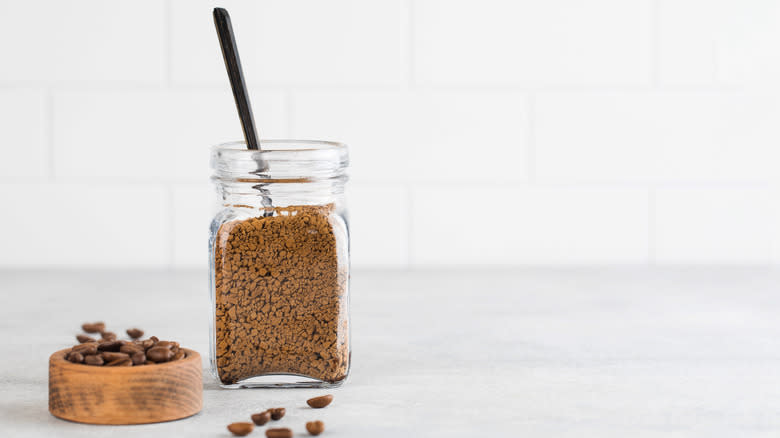
Designed to dissolve, instant coffee granules are vulnerable to moisture. They will clump together as a result of liquid residue, which not only makes them become hard and difficult to scoop and liquify but also results in a grainy cup of coffee. Even particles of liquid in the air can pose a problem if the granules are exposed for too long.
To avoid this clumping, be sure to store your granules in an air-tight container, which may not necessarily be the same container that the coffee comes in. Keep this container in a cool place, such as a dark pantry or cupboard, and close the lid tightly. This is particularly important when you're pouring or boiling water nearby, as small droplets of moisture can settle in an open jar and harden the coffee. While the refrigerator may help to keep your coffee cool and away from moisture caused by humidity, this is not an ideal storage solution in the long term. Changes in temperature can cause the grounds to become lumpy and stiff.
A useful hack for keeping baked goods fresh, silica gel packets may also help to absorb extra moisture and keep your coffee granules dry. So dropping a sachet or two into your container is a good idea if you know that your coffee has come into contact with liquid. Though lumpy granules are not completely unsalvageable and can be broken up, it's no doubt worth the extra effort to keep your coffee dry and extend its freshness.
Expecting It To Taste Like Freshly Ground Coffee
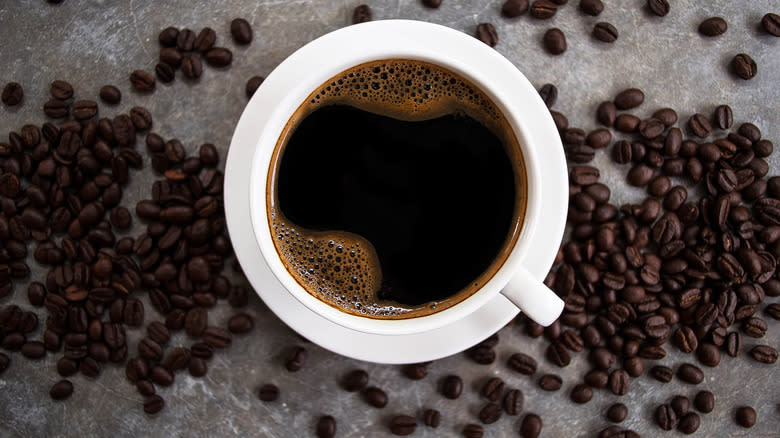
While instant coffee holds a lot of merits — not least in that it typically takes a few minutes to prepare and creates minimal mess — it's probably best to remember that it won't quite reach the same level as fresh, ground coffee. The processes that coffee beans go through to end up in a ready-dissolvable form strip them of some of their most complex and rich tasting notes, unlike ground coffee.
If, therefore, you are expecting your instant coffee to taste like a freshly ground, rich Arabica-bean espresso from a specialist cafe, or even your regular Starbucks order, then you may be disappointed. Many coffee connoisseurs are quick to dismiss instant coffee for this reason, as it, arguably objectively, is not of the same caliber as its fresher counterpart. However, the ease, adaptability, and health benefits of instant coffee should not go unnoticed. Instant coffee's perhaps undeserved reputation as an inferior substitute for ground coffee is countered by its functionality.
Instant coffee is generally cheaper, creates less waste, and can be made much quicker than most coffee pods, beans, or take-outs. It also contains less caffeine, which can be a useful quality if you're looking to reduce your caffeine intake or enjoy multiple cups a day. The poor reputation instant coffee has, then, can more realistically be attributed to poor preparation. So there's no reason why, when you know which mistakes to avoid, this type of coffee shouldn't be embraced.
Read the original article on Tasting Table.


